|
Lemon Balm is called “Heart’s Delight” in southern Europe, and for good reason. In the summer, there is nearly always an iced pitcher of Lemon Balm tea on the kitchen counter, and not only is it delicious, thirst-quenching and deeply refreshing, but it also keeps the household chilled out with its calming and soothing abilities. To get the best of lemon balm, you need to grow her. She loses flavor when dried, so to get the delicious flavor, snip off the top 6 inches or so of some lemon balm stems, and twist and tear them into a quart jar, filling about 1/3 to 1/2 full with green. Then, fix one of two ways: Cold water: pour filtered room temperature water over, cap and let sit overnight to draw through. Hot water: pour filtered hot (but not boiling) water over, cap and let sit an hour to draw through. Both methods work fine, but the cold water infusion does give a slightly better flavor. After steeping, strain and dilute to taste, serving over ice. Some wonderful combinations include any of these herbs: spearmint (far better to grow than peppermint, and our favorite to grow is called Kentucky Colonel), rose, holy basil. Delicious! Lemon balm is also wonderful blended into honey, steeped in wine, or made as a syrup or a jelly. A few sprigs in the bath or a foot soak are divine. When growing lemon balm, know that the taste will change when the plant flowers, so to get the most out of your lemon balm keep an eye on it, and when it starts to flower cut the entire plant down to about 4 to 6 inches. You will get another flush of new growth and keep the lemon balm deliciousness going all summer long. Lemon Balm Popsicles Blend in blender and freeze in popsicle molds: Handful of fresh lemon balm Half a handful of chopped spearmint Water (around 2-1/2 cups) Organic lemon juice (around 1/3 cup) Raw honey (around 2 T.) 2 to 3 squirts plain or lemon stevia Optional add-ins: fresh ginger (1” piece or so) Note: if you have low thyroid, don’t over-do lemon balm. That being said, we have never seen that be an issue, but everyone is different. Be sure to sign up for our newsletter, so you don't miss a thing: Disclaimer: Every body is different, and any plant can cause an unpleasant reaction depending on the person. Start small and listen to your body – it is the ULTIMATE AUTHORITY. This information has been compiled from reputable herbalists and natural care professionals. It is intended for educational purposes only. These statements have not been evaluated by the FDA.This information is not intended as medical advice, nor is it intended to prevent, diagnose, treat, or cure any disease. Seek professional medical care for health concerns.
0 Comments
BLOOMING TOGETHER: Yarrow, Elder & Queen Anne’s Lace VS. Poison Hemlock (& Hedge Parsley) HOW TO DISTINGUISH these UMBEL FLOWERING PLANTS 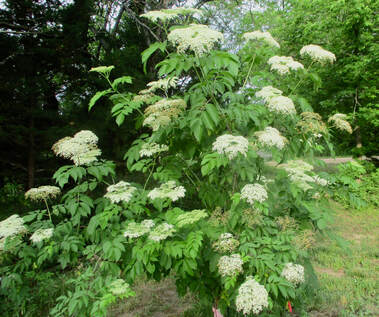 What kind of wand did Harry Potter defeat Voldemort with? It was ELDER! And for good reason, because Elder’s magic is legendary across cultures. I will do another post about Elder’s MAGIC when the berries are ripe, but for now I want to focus on the frilly, divine FLOWERS. Elderflowers are an UMBEL, as are Yarrow and Queen Anne’s Lace, meaning that the individual stems of the small batches of flowers that make the flower head all arise from a single point and often are a different lengths to make the flower head flat – or fairly flat – across the top. Think of the word “umbrella” and how the supports of an umbrella reach out to hold up the fabric of the top all as one piece. It’s slightly rounded, but even. The flowers of Elder are beautiful and they smell wonderful, but they don’t last long and will wilt quickly after gathering. If left on the plant they disappear fairly quickly too, soon to be dark purple elderberries. When gathering Elderflowers or any wild plant, be sure to take some time before gathering to ground yourself and open your heart to the plant, asking for permission to gather and listening with your heart for the answer. If the plant gives permission, have some way to reciprocate after gathering – leave some organic cornmeal or tobacco (traditional Native American offerings which arose from close connection to Earth and her plants) or some good-quality compost is a welcome gift too. If nothing else, a song or a prayer for the Elder’s wellbeing and a heart full of gratitude for her generosity. Elderflowers can be dried or tinctured for later use as medicine, and they are a valuable addition to the home herbal apothecary. Use as an ally for colds and flu, helping reduce the duration and ease symptoms. Elderflowers boost the immune system and have antiviral properties. They also support the respiratory system, helping to thin mucous and act as a decongestant. If there is a fever involved, Elderflower is a gentle diaphoretic, which means it helps support the body’s fever response, helping the body open the pores and break a sweat, making the fever both more effective and shortening the duration. To add a boost to elderberry syrup, dry the flowers and add them as part of the syrup when processing the berries. Elderflowers have a reputation for improving skin issues. They can help even out the complexion, and even reduce age spots and wrinkles. Elderflowers are a good addition to healing salves and bruise oils too, as they can help speed healing of wounds, bruises and inflammation. Dry and infuse in olive, almond or safflower oil (or a combination) to make an amazing skin-beneficial and divinely aromatic after-bath body oil. Elderflowers contain a natural yeast, so they ferment beautifully into a delicious “champagne.” I usually make Elderflower champagne around summer solstice (mid June) and enjoy some of it at Lammas (beginning of August). If there is any leftover after that, it is enjoyed at later holiday celebrations. It is fizzy and delicious, and perfect for remembering the taste of sweet summer days. Recipe is below. Enjoy! >>> CLICK HERE FOR PRINTABLE RECIPE <<< ELDERFLOWER CHAMPAGNE You need: • A gallon sized jar, or cut the recipe in half for a half-gallon jar • Filtered water (no chlorine) • 6 to 8 large Elderflower heads (wait at LEAST 3 days post-rain) • 2 organic lemons (no pesticides), thinly sliced • 2 cups organic sugar (no pesticides) • 2 Tbsp. organic white wine vinegar (no pesticides) • Clean cloth napkin (or something similar) • Rubber band (sized to hold the cloth napkin onto the top of the gallon jar) • A dark cabinet or a brown paper bag (or a towel) • Bottles or narrow-mouthed quart canning jars (sterilized) • Yeast – any (may not be needed) Instructions: Heat 4 cups water with the sugar until sugar is completely dissolved. Let cool a bit, then pour into gallon jar. Add more filtered water to fill the jar halfway or so. Add in the thinly sliced lemons and white wine vinegar. Then use a clean scissors to snip the little flowers off the head into the jar. Don’t worry about the thin green stems at the top of the flowerhead, but try to keep the thicker stems out of the jar. Stir. Then fill the jar to the neck with additional filtered water. Stir again. FOUR DAYS: Cover with clean, tightly woven cloth napkin (or similar) and secure with rubberband. Sit in dark cupboard or cover with a brown paper bag on the counter for four days. Take a peek and stir it each day. Look for signs of fermentation (bubbling). If you don’t see any by the second day, add 1 tsp. yeast (any yeast you have on hand is fine). TWO ADDITIONAL WEEKS: After the fourth day, sterilize beverage bottles or quart canning jars. Strain the champagne well, squeezing out as much liquid as possible (I like to use a cotton/hemp almond milk bag for this). Pour into bottles/jars, leaving an inch or more headroom in each of the bottles/jars. Place in dark cabinet or on countertop (cover with cloth or brown paper sack to keep out light) for two weeks. STORE IN REFRIGERATOR: After two weeks, move bottles/jars to refrigerator and serve chilled. The yeast is alive, and the champagne will continue fermenting, but the refrigeration will slow down the process considerably. It will increase in dryness and alcohol content (and decrease in sugar content) as it ages. Fermentation creates pressure, so be aware of that and use caution when storing and opening. It will keep for a long while, and some years we haven’t opened it until winter solstice. It was delicious. Enjoy this fantastic elixir of summer. It is a great way to capture the taste of summer in a bottle. Note: Ingredients need to be free of chlorine and pesticides so the yeast is not impeded Be sure to sign up for our newsletter, so you don't miss a thing: Use CAUTION! Do not eat/use a wild plant unless you have 100% certainty it has been identified correctly. If you have a health condition, are taking pharma meds, or are pregnant/breastfeeding, be sure to research contraindications.
Disclaimer: Every body is different, and any plant can cause an unpleasant reaction depending on the person. Start small and listen to your body – it is the ULTIMATE AUTHORITY. This information has been compiled from reputable herbalists and natural care professionals. It is intended for educational purposes only. These statements have not been evaluated by the FDA.This information is not intended as medical advice, nor is it intended to prevent, diagnose, treat, or cure any disease. Seek professional medical care for health concerns. MEDICINE
Ask any herbalist what their #1 indispensable herb is, and chances are good that most will name Yarrow. The true stories of yarrow saving lives abound – from the young man who sliced his leg with a chainsaw to internal bleeding injury from a skateboarding accident*. Yarrow’s healing properties are legendary, as her many common names reveal: Bloodwort, Woundwort, Carpenter’s Weed, and Plumajillo (little healing feather). Even her Latin genus name, Achillea, refers to her alliance with soldiers and healing. Achilles was the hero from the Iliad, and he is said to have used yarrow a great deal to help heal the soldiers he led in battle. Yarrow is a wild herb, but she is also easy to grow from seed, and she makes a beautiful addition to landscaping. There are many decorative cultivars of yarrow in a variety of colors (pink, yellow, red and more), but for medicine and magic, stick with the original white-flowered Achillea millefolium. Yarrow can be used both internally and externally. When used externally for wounds, she helps stop bleeding, pulls the edges of a wound together, speeds healing, and prevents infection. She can help resolve active infections, and any ailment involving the fluids of the body will likely benefit from Yarrow. Yarrow is one of the rare balancing herbs, and she helps restore balance to the waters of the body. What to do about fever? Fever is the body’s way of making the environment inhospitable to whatever pathogen is attempting to gain a foothold. Unfortunately, many people think a fever is supposed to be treated with pills, but doing so has been shown to have negative – and in some cases severe – effects. I don’t the term “side effects” – it minimizes that what is happening is an EFFECT, just not the one the pharma companies wanted. In the case of NSAIDS (acetaminophen and ibuprofen), studies have shown taking them when sick makes you more contagious AND extends the illness. Instead, let your body do its job. Taking a cup of hot yarrow + elderflower tea can assist the body in its efforts, bringing the fever up slightly and then breaking it. Here’s how I use Yarrow medicinally: Poultice/Compress – open wounds, infections, impact injuries/bruising (fresh crushed or dried and rehydrated) Tea – first sign of illness, to resolve fever (along with elderflower), internal injury, after surgery or tooth extraction, treat/prevent uterine congestion. Short-term use only (6 weeks max, then at least 2 weeks off). Tincture – external use only due to an alcohol-soluble constituent (B-iso-thujone) which can cause serious health issues. Used externally as liniment to treat impact injuries/bruising and combine with plantain + calendula tinctures as a first aid antiseptic spray. Oil/Salve – combine dried yarrow + plantain + calendula and infuse in oil to use as the base of healing salves. *see herbalists Matthew Wood and Margi Flint MAGIC Why is Achillea millefolium’s common name Yarrow? It is thought to be derived from the old English word, gearwe, a word associated with the art of magic. Yarrow has a long, cross-cultural history of being used magically. If you are familiar with the Chinese I-Ching, you may be surprised to learn that I-Ching divination was originally performed with dried yarrow stems. Yarrow is said to have the ability to anchor us in the earth plane while facilitating connection with the unseen. She can be an ally in opening up channels for divination and in ritual or ceremony to enhance intentions for protection, bravery and healing, as well communicating with ancestors/deities or other ethereal beings. Yarrow flower essence can help establish healthy boundaries, strengthen the aura and aid with processing trauma, much like Bach Flower Essences’ famous Rescue Remedy. For magical purposes, drink yarrow as a tea, dry and burn as a smoke (great for consecrating sacred items and cleansing), or lay the fresh or dried plant directly on the body and/or altar. For helping facilitate seeing beyond visible realities, place over the closed eyes while journeying. How do you use yarrow? What have your yarrow experiences been – either healing or magic? Comment below and share your story! Use CAUTION! Do not eat/use a wild plant unless you have 100% certainty it has been identified correctly. If you have a health condition, are taking pharma meds, or are pregnant/breastfeeding, be sure to research contraindications. Disclaimer: Every body is different, and any plant can cause an unpleasant reaction depending on the person. Start small and listen to your body – it is the ULTIMATE AUTHORITY. This information has been compiled from reputable herbalists and natural care professionals. It is intended for educational purposes only. These statements have not been evaluated by the FDA.This information is not intended as medical advice, nor is it intended to prevent, diagnose, treat, or cure any disease. Seek professional medical care for health concerns. BE VERY CAUTIOUS GATHERING WILD PLANTS -- ESPECIALLY THOSE THAT LOOK LIKE THEY ARE FROM THE CARROT FAMILY -- SOME ARE DEADLY Queen Anne's Lace is delicate and lovely, and one can imagine that Queen Anne might have carefully crafted the flowerhead from thread with the intention of creating a decorative doily. In fact, the story goes that the single dark reddish flower often found right in the center of a white QAL flower is a single drop of blood from where Queen Anne pricked her finger while making the lace. This beautiful wildflower is wild carrot, Daucus carota, the mother of the sweet orange root vegetable everyone knows. I don't recommend trying to wildcraft the root, though. This is a biennial, which means she only lives two years, and the second year is the year she sends up a stalk and flowers. By that time, the root is pithy. The more edible roots are those of the first year plant, but because she doesn't have the telltale signs for positive identification the first year (the tall flower stalk, the hairy stems, etc.), please don't do anything so foolhardy as to wildcraft first year wild carrots. There are several carrot family member plants that are poisonous, and some are DEADLY. The tiny little roots of QAL are not worth risking death. Instead, eat the flowers and leaves, which have a delicate carrot flavor. The leaves, flowers and seeds of QAL have a long history of use as herbal medicine, treating digestive disorders as well as liver, kidney and bladder issues. The seeds have been used as a natural birth control and to terminate pregnancy, so don't ingest the seeds while pregnant or attempting to conceive. Our favorite uses for Queen Anne's Lace is to add the flowers to salads, cut flowers for the table, and make delicious Queen Anne's Lace Jelly (recipe below). If you have QAL growing in your yard, you will want to be sure to remove the seed heads when they form, or she will take over your yard. QAL is invasive and can displace native species, which we don't want. Did you know that carrot seed essential oil is made from QAL? :) QUEEN ANNE’S LACE JELLY Has a delicious light floral taste. (from the book Gatherings from the Good Earth by Twila Fairbanks) Note: First identify Queen Anne’s Lace correctly. I normally collect by the end of June in my area. Read all instructions first before gathering the blooms to make the jelly so all supplies are on hand. To make infusion for jelly: 2 packed cups of heads (approximately 20 heads of fresh blooms, not older blooms) 4 c. almost boiling water I use a half gallon jar for the heads and pour the hot water over, punching down and stirring with a wood spoon. Cover with lid. Let set to steep and cool down 4 hours. Strain two times with super fine small strainer and cotton cloth, being careful not to disrupt the sediment (dirt etc.) in bottom of jar. Leave behind about 1/4 c. of sediment if present. Toss the wilted heads in compost. Have 6 - 4 oz. jelly jars with 2- piece lids sterilized and ready or 8 -2 oz. Jars, which are a smaller size and great for giving away. Set jars on a cookie sheet with sides lined with clean towel. To make jelly: 3 cups strained infusion 2 T. lemon juice (from a fresh lemon – not bottled) 1 pkg. Sure Jell powdered fruit pectin Put all in a large stainless steel pan, stir and bring to a rolling boil. Add 4 c. sugar and boil 1 minute longer. Remove from heat. If any foam on top, skim off with large metal spoon. Ladle into jars. Wipe rims of jars and put lids on and screw down tightly. Use hot water bath (covering jars with water and lid) for 10 minutes. Remove jars carefully and let rest 24 hours. (Twila & grandson making it several years ago) Use CAUTION! Do not eat/use a wild plant unless you have 100% certainty it has been identified correctly. If you have a health condition, are taking pharma meds, or are pregnant/breastfeeding, be sure to research contraindications. The seeds of Queen Anne's Lace can affect hormones and have been used as a natural birth control method, as well as a way to terminate pregnancies.
Disclaimer: Every body is different, and any plant can cause an unpleasant reaction depending on the person. Start small and listen to your body – it is the ULTIMATE AUTHORITY. This information has been compiled from reputable herbalists and natural care professionals. It is intended for educational purposes only. These statements have not been evaluated by the FDA.This information is not intended as medical advice, nor is it intended to prevent, diagnose, treat, or cure any disease. Seek professional medical care for health concerns. |
About UsWe are a Mother-Daughter Team passionate about connecting people with Mother Earth, Ancestral wisdom, and other kindred spirits. Archives
June 2020
Categories |
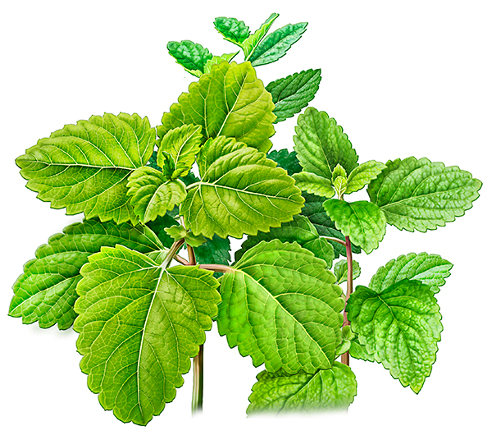

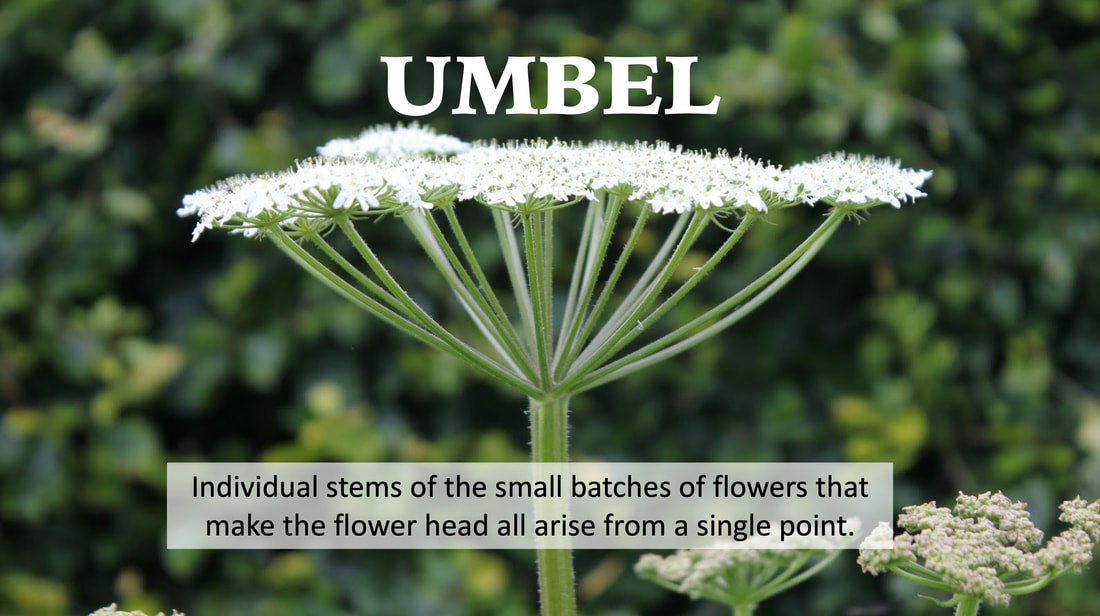
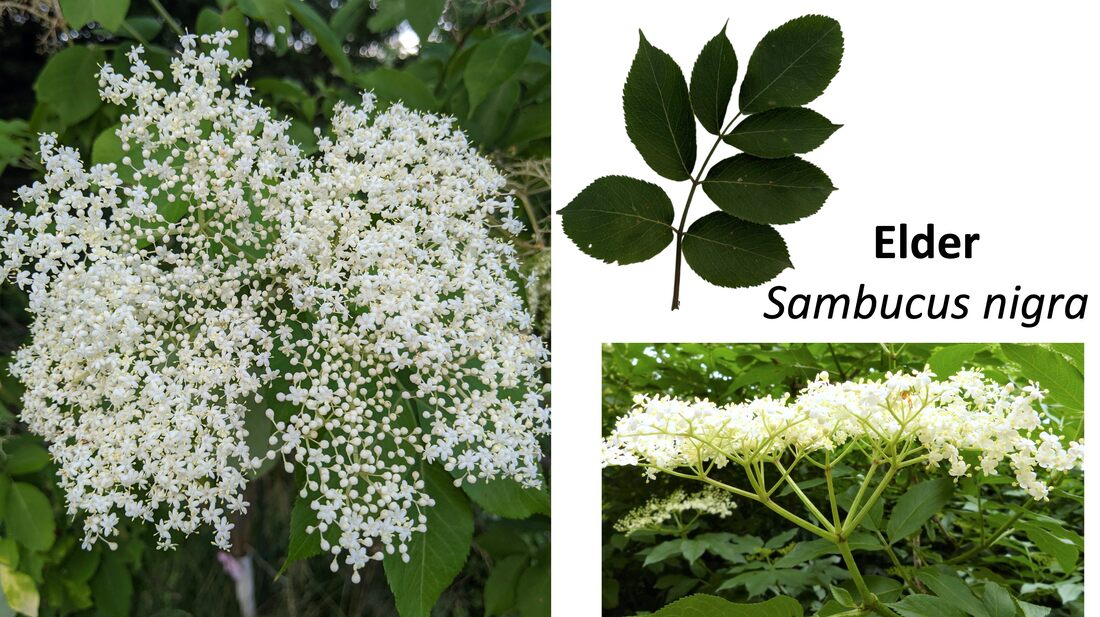
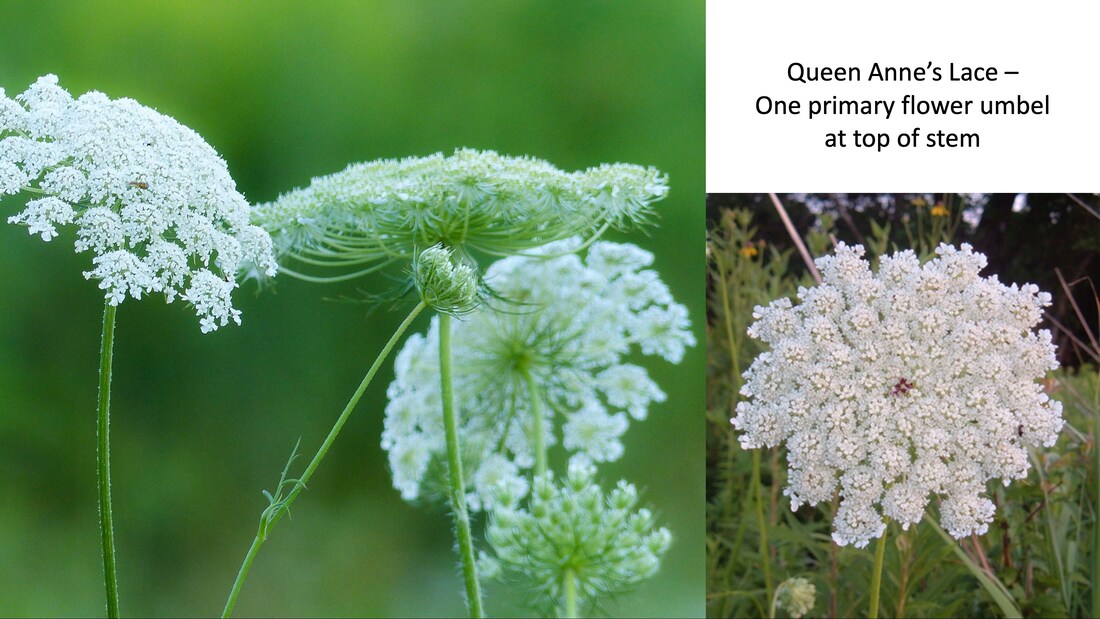
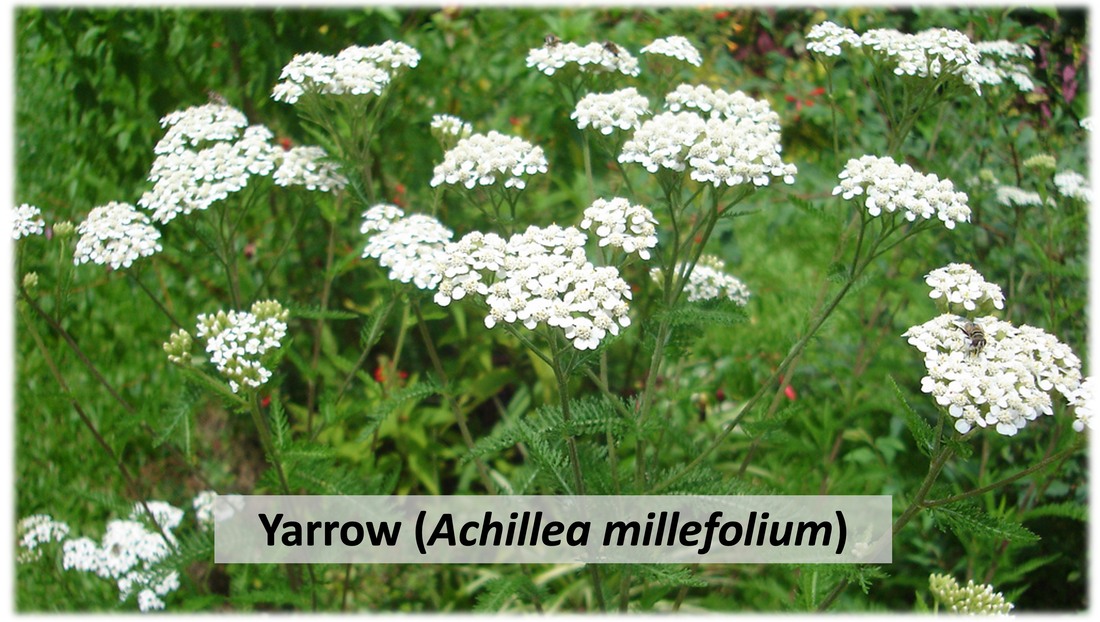
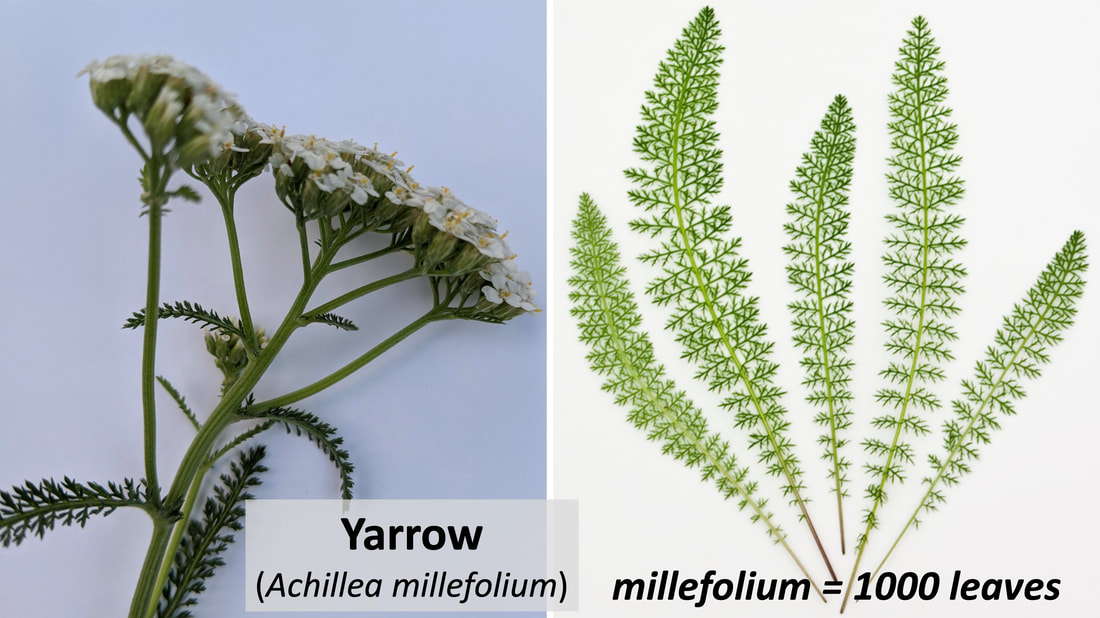
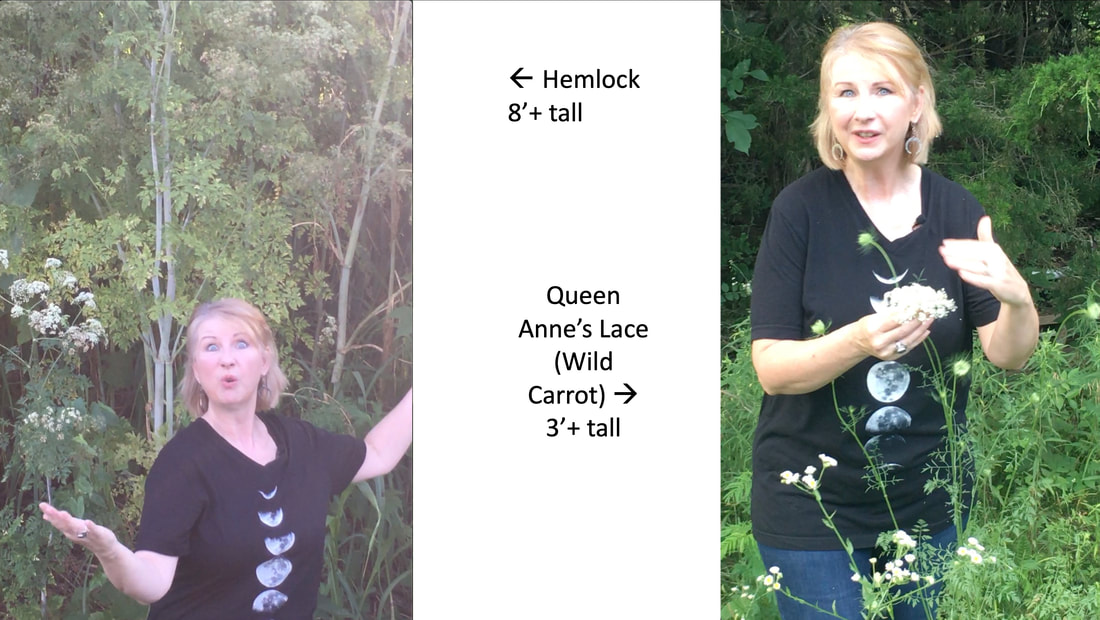
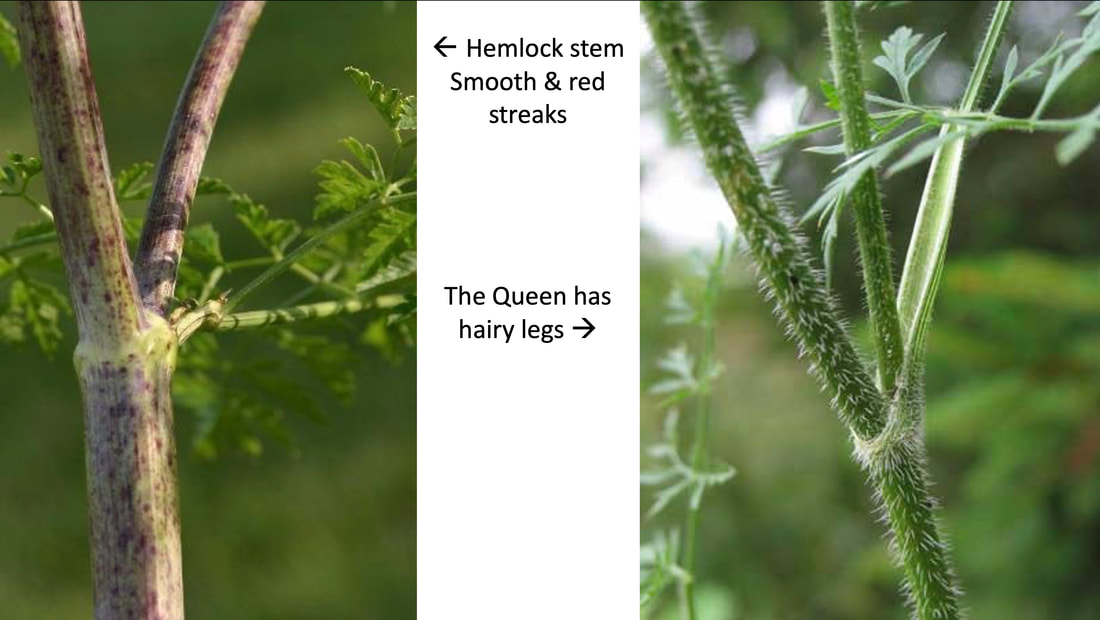
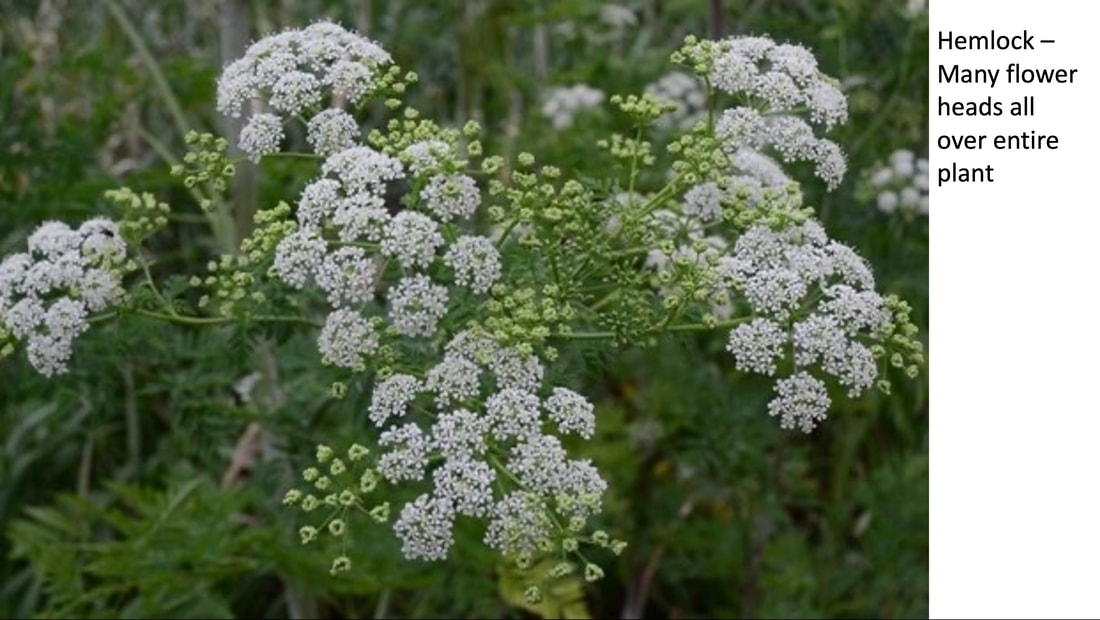
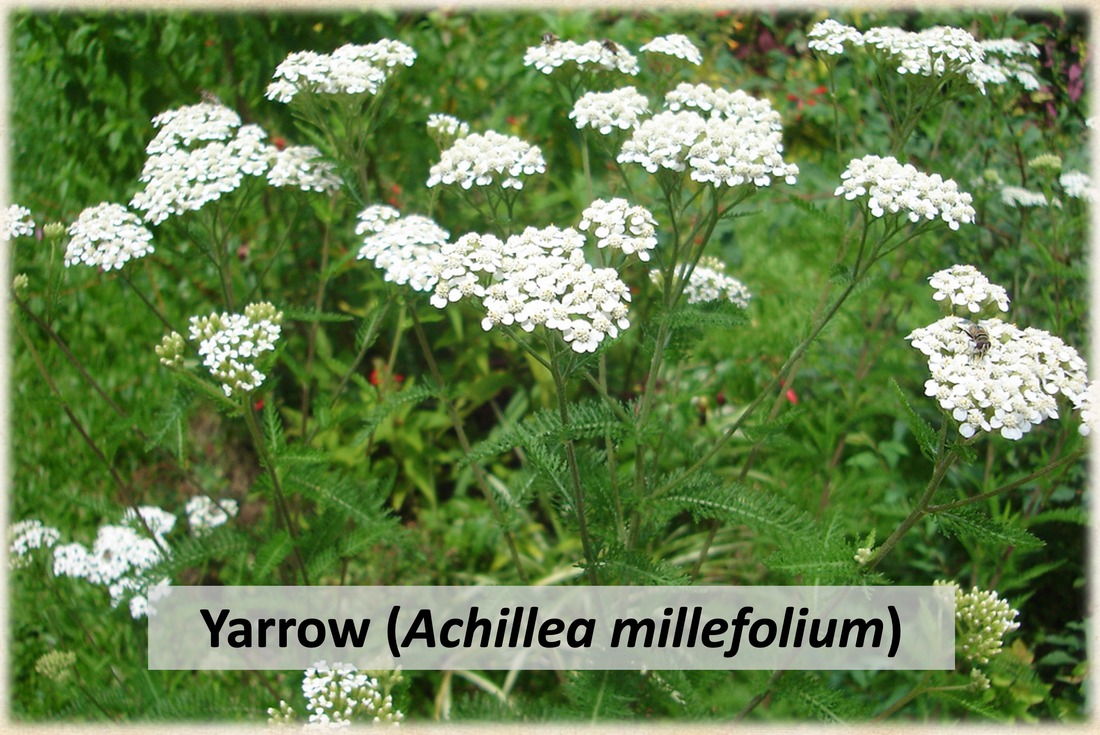
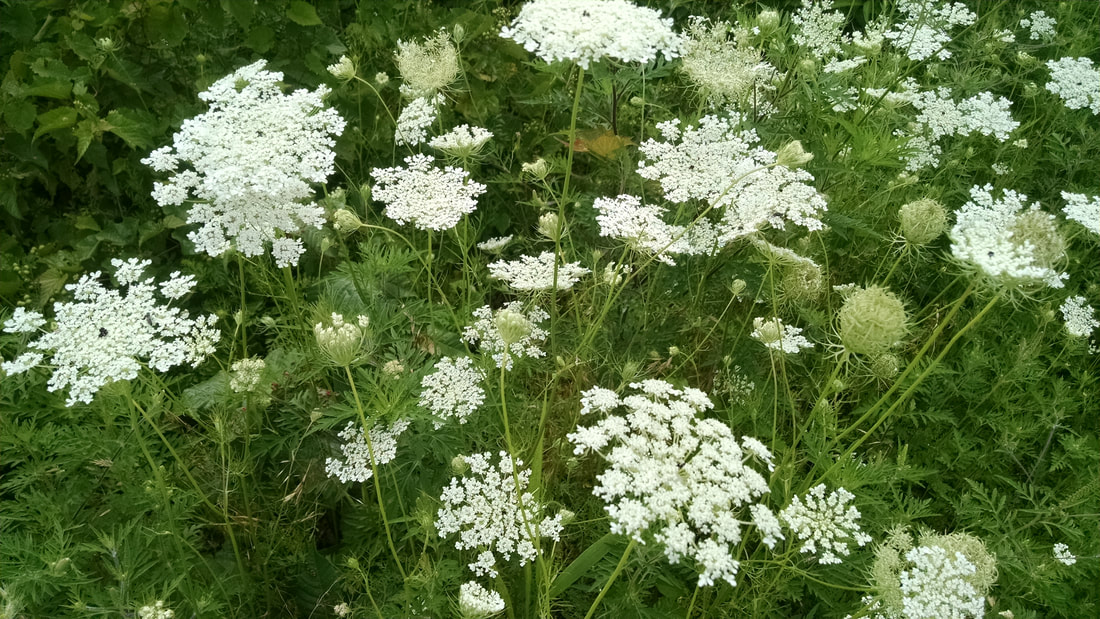
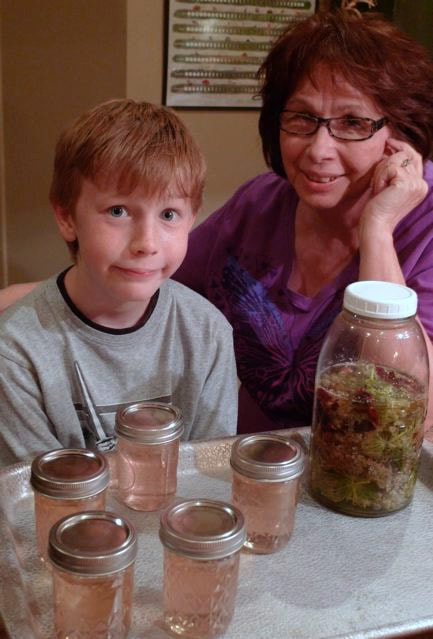
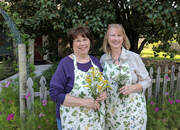
 RSS Feed
RSS Feed